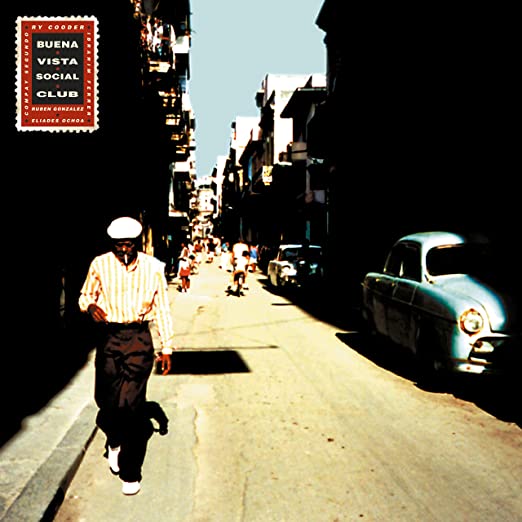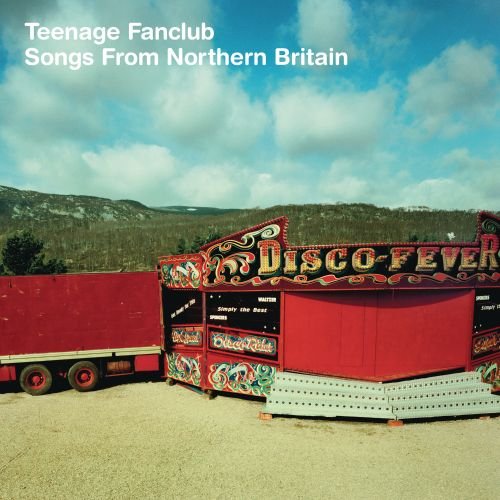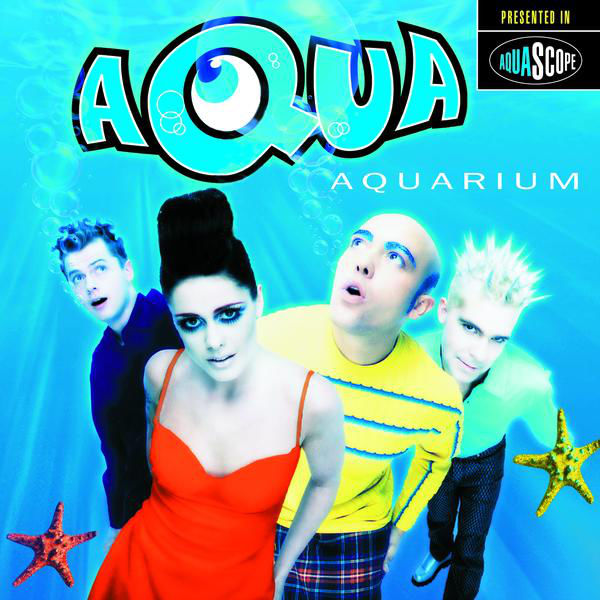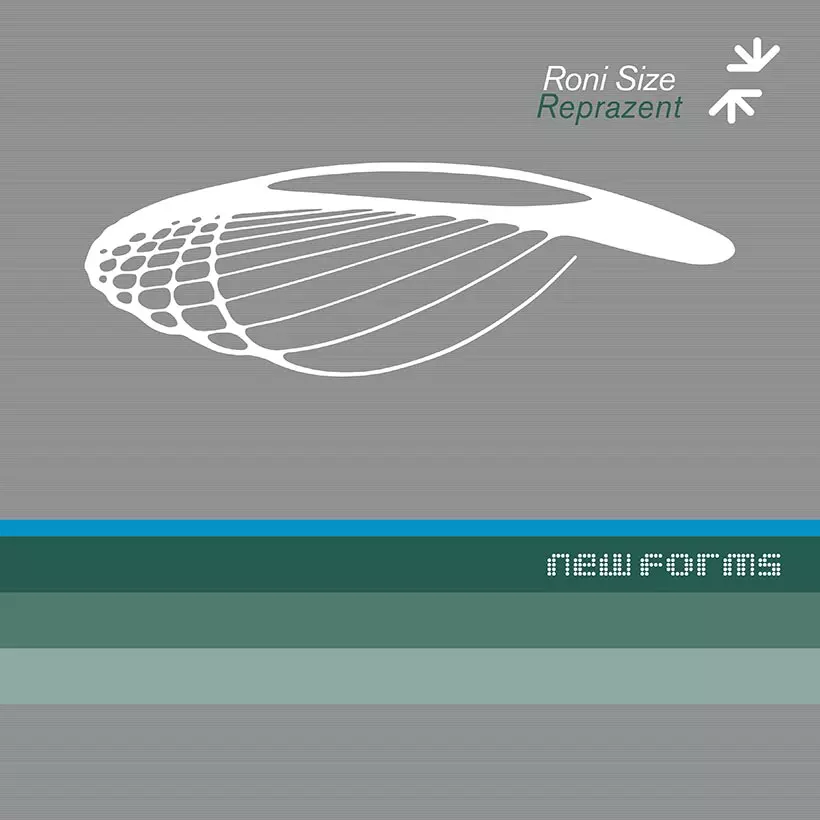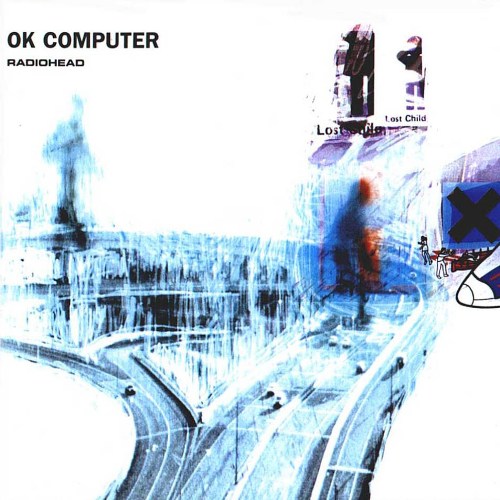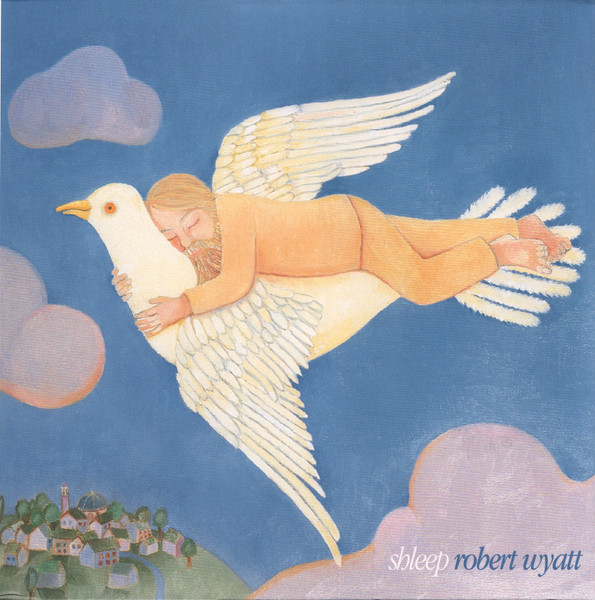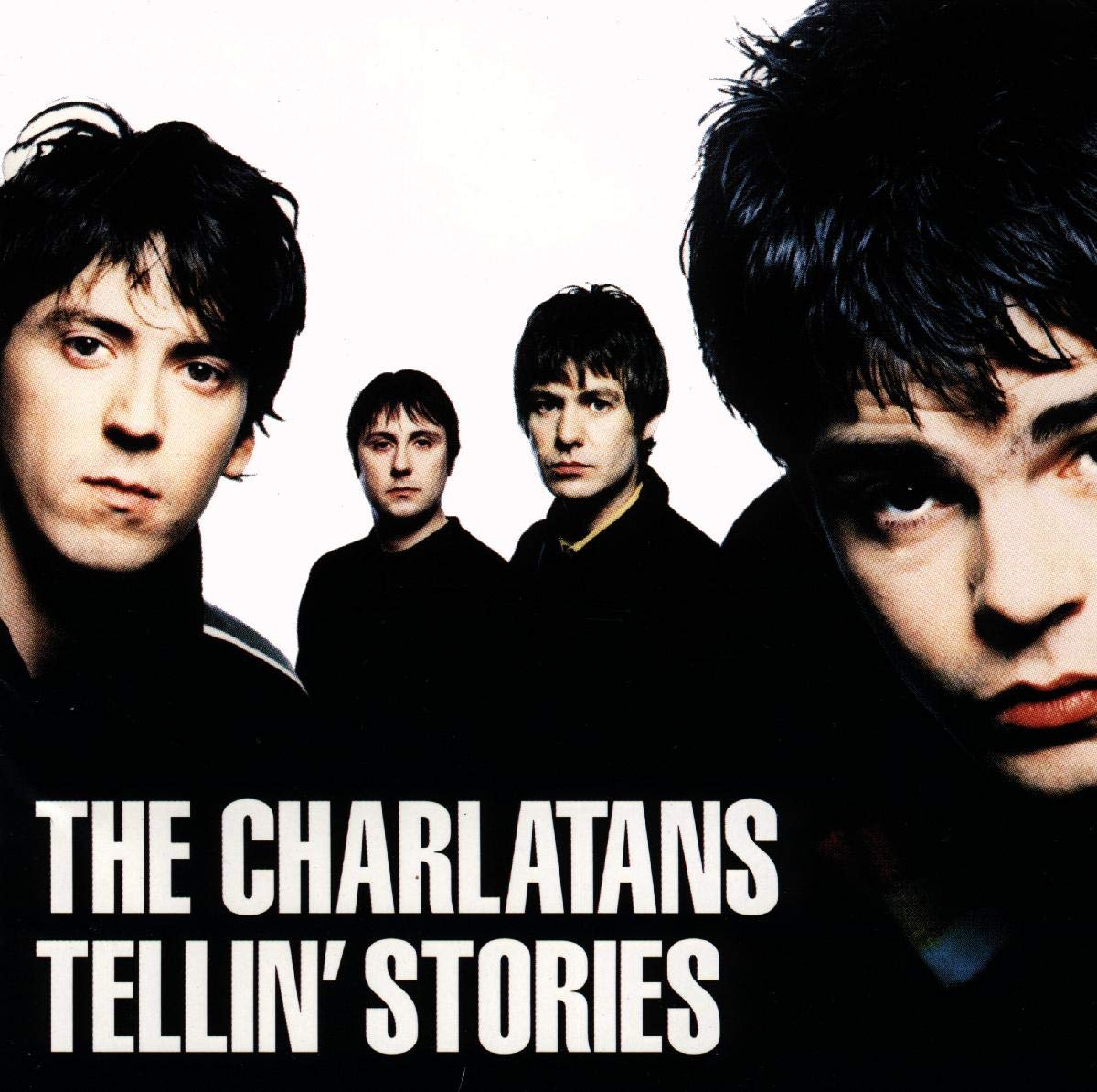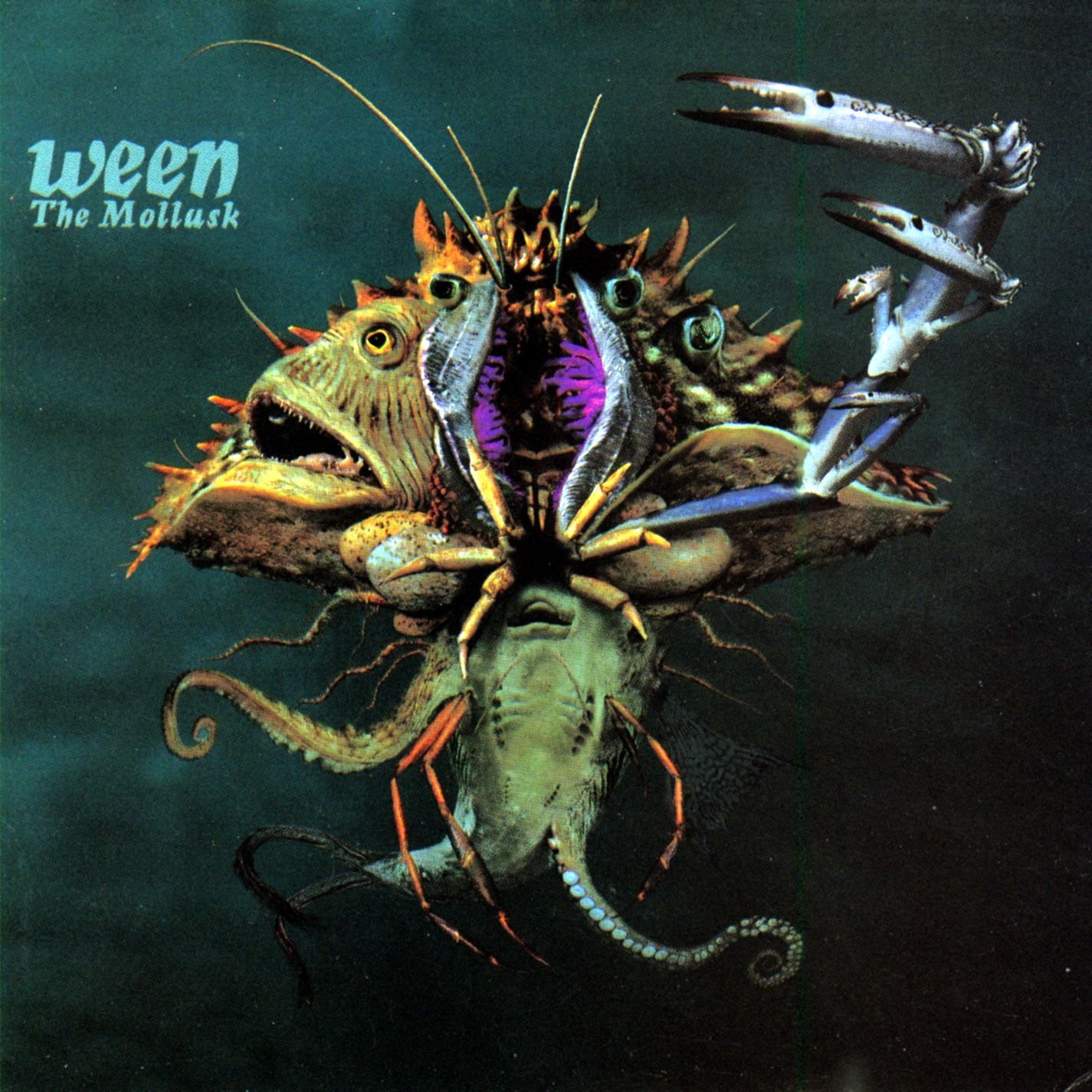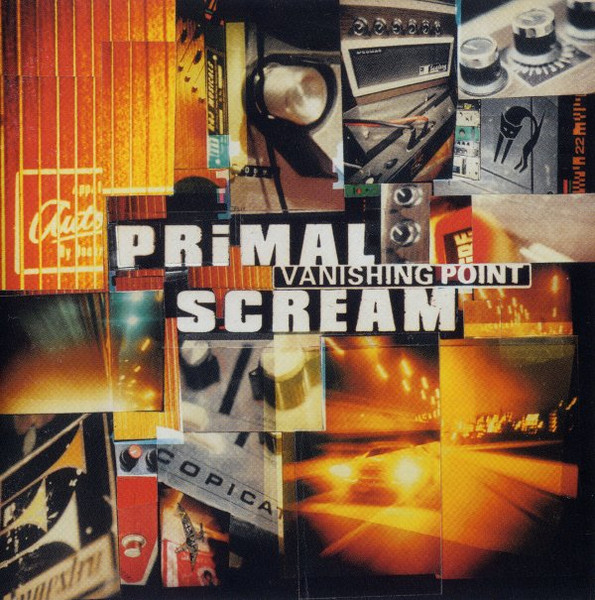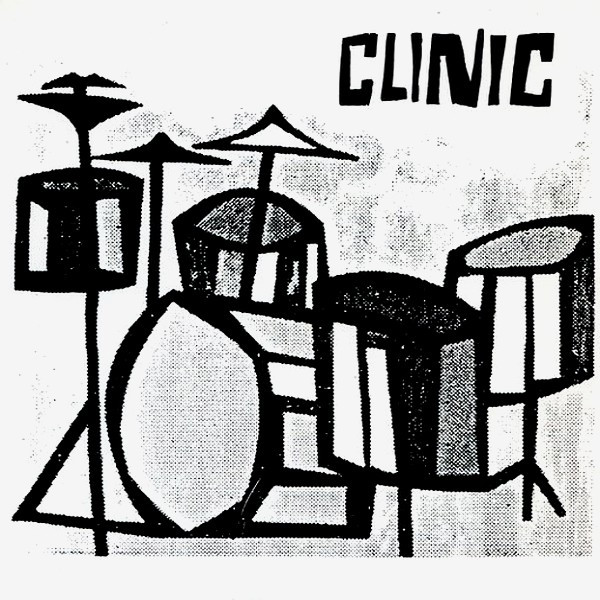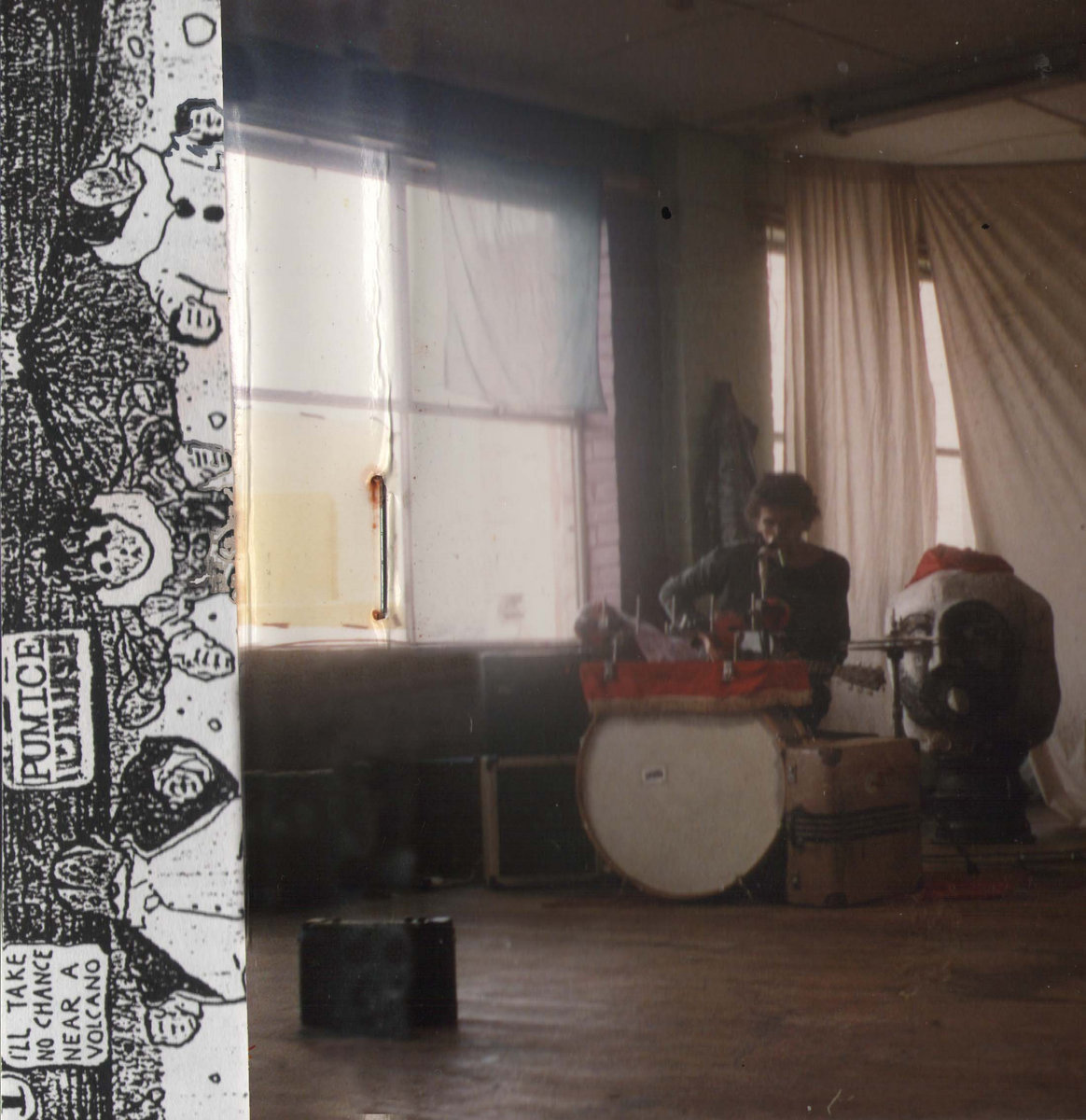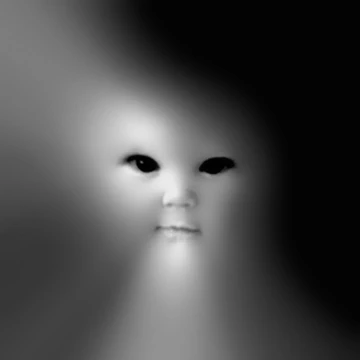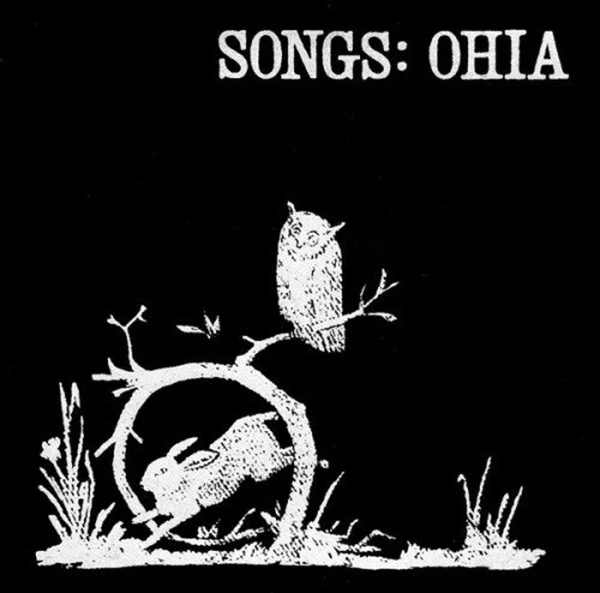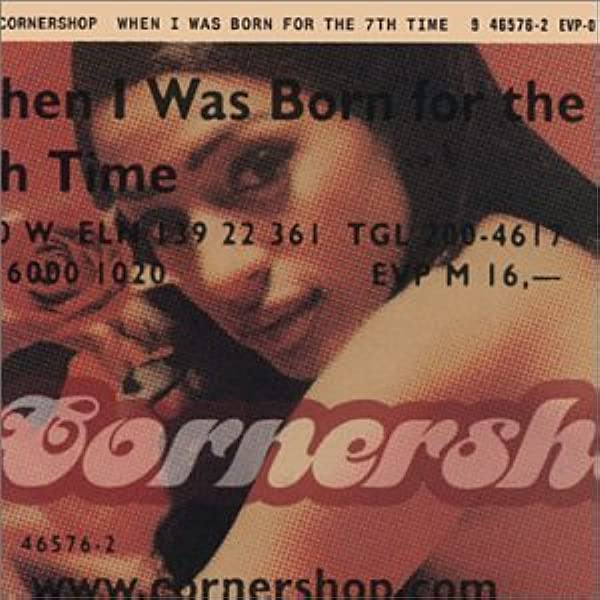Some years just seem to have a halo around them: 1969, 1971, 1991, 2001 – they have all produced some of the most influential and acclaimed albums of all time. But when discussions are broached concerning these years, there is one which is inevitably left off the list. 1997 possesses the distinction, maybe more than all of those other years, of being a complete melting pot year for music. There was no guiding aesthetic, no adherence to one genre. It felt as though we were experiencing something truly historic, a moment in time when artists like Radiohead, Ween, Bob Dylan, Company Flow, Daft Punk, Erykah Badu, Missy Elliott, and Steve Earle were all vying for our undivided attention.
But the importance of 1997 goes far beyond the average person’s consumption of music. This year provided inspiration for artists both new and established, offering previously unknown insight into possibilities not yet imagined. As we are now working our way through the 25th anniversary of 1997, it felt right to look back and discuss some of the albums which have become milestones, not just of genre, but of entire histories of music. We’ll get to Beats Per Minute’s own 1997 retrospective, but first, it seemed appropriate to let musicians have their say. We approached some artists and asked them to look back and pick an album from 1997 which inspired them, whether in their personal life or in the ways they approached their music. And they had quite a lot to say.
Buena Vista Social Club – Buena Vista Social Club
[Nonesuch/World Circuit]
The stars must have been seriously aligned when producer Nick Gold, engineer Jerry Boys and musicians Joachim and Ry Cooder arrived in Havana, Cuba in 1996. Originally the plan was to have a Cuban and African recording session but when musicians from Mali couldn’t make it due to bureaucracy the project shifted focus. No big deal right? Thanks to Ry Cooder’s curious ear and Cuban bandleader Juan de Marcos González’s ability to find an incredible cast of once forgotten local musicians, the Buena Vista Social Club came to be. It’s astonishing to know that this happy accident not only produced a magnificent album that lifted up some amazing musicians and music styles that hadn’t been heard in years, but it also sparked an awakening of the significance of Afro Cuban and Latin American music.
The take away from this album is how important it is of being in the moment and going with the flow. Perhaps that’s part of the charm we hear when listening back to this album and being drawn into these soulful performances of son Cubano, guajira, boleros, and danzón. As a bass player my ear is instantly attracted to the melodic and syncopated upright bass lines of Orlando “Cachaìto” Lopez. It’s what gives this music that movement and sophisticated groove. The instrumentation and arrangements plus the intricacies of the guitars and solos heard throughout the album build a continuous playfulness that is undeniably sublime. A lot of my friends were instantly blown away by the elegant phrasing and solos of pianist Rubén González. Then there’s the vocals of Ibrahim Ferrer, Compay Segundo, Omara Portuondo and Eliades Ochoa with so much passion that you can’t help but stand up and sway with the rhythms and dynamics.
You can really feel the vibe and chemistry and part of that magic is how integral the room sound is on this recording. I had a chance to work at the historic EGREM studios in Havana in 2007 with Amparo Sánchez a singer songwriter from Spain and when I sat down at the same Steinway piano that maestro González had played I instantly could feel hear that room sound I knew so well. I’ll wrap this up with a story of when I met Eliades Ochoa in 2010 at the Womad Festival in Australia. When I introduced myself I said I was from America and his response was “yes, we are all Americans”. I think that’s an important note for a lot of people from the USA to embrace. Perhaps music can help lead the way.
~Joey Burns, Calexico
Lambchop – Thriller
[Merge]
Lambchop’s Thriller is a transitional record in the best way. It’s still dark, but shiny horn lines and pop songs (3 of them by East River Pipe’s FM Cornog) are starting to glimmer in the Nashville swamp. The comically bizarre doo-wop of “My Face Your Ass” (featuring one of Wagner’s best chorus lines – “I’ll kick your punk rock ass”) would sit nicely in the sprawl of their first two albums, but is immediately followed by the charging soul horns of “Your Fucking Sunny Day” and East River Pipe’s “Hey Where’s Your Girl” before plunging back into noisy (if beautiful) drones for the next three tracks. The album totters between sun and shade like Wayne White’s moss-covered trawler on the cover is pulling a new Lambchop out of the bog of the past & it’s one of my favorites in their deep catalog.
~Mac McCaughan, Superchunk
The Sea and Cake – The Fawn
[Thrill Jockey]
April, 1997, I found myself driving down Bedford Ave, in Williamsburg, Brooklyn, heading north. I had $50 in my pocket—and a head full of ideal to acceptable scenarios. Did I want to be a part of something? I sure as hell did. This was NYC! No matter the mode of expression—visual, music, acting, comedy, there was surely a sympathetic niche to explore, people with a common aesthetic to meet. More specifically a rock band in need of a drummer like myself. Regardless, first things would be first.
Just weeks after I parked my car I was selling LPs/CDs at a friend’s second hand clothing shop that I helped ready for its opening. At the time, a lot of popular left-leaning music was coming out of Chicago via Thrill Jockey Records—home to many great artists such as Trans Am, Tortoise, and The Sea And Cake, who had just released The Fawn.
From the opening track to the last—a big mood—delivered gently. The sound of Sam Prekops voice led me to believe that nothing was wrong…. With the disc playing, nothing ever was or would be, until the last tracked had ended, that is. The Fawn emanated an ease—a higher sense of emotional intelligence that was brand new to my ears. All delivered by a musicianship that was high reaching without being self congratulatory or gratuitous.
For me The Fawn represents more than just clever sonics and songwriting by clever musicians—lulling me into a beautiful but false sense of stability. It was the score to my endeavor.
Soon I would meet my band mate of the past 22 years, Daniel Kessler. 1997 was the year that my shot in the dark gave yield to a light that is still luminous. Yes—joining an amazing band that would sign a record deal with one of the coolest indie labels on earth—to then tour the world over, again and again—would be the ultimate. Did I think this would happen as it did? No. I was lucky enough at this point to have an income—joining Interpol was damn near a pipe dream coming to fruition.
The Fawn represents the neurotic calm before the ecstatic storm and still plays down as such over two decades later—reminding me how beautiful it was to be blind but faithful with only $50 to my name.
~Samuel Fogarino, Interpol
Teenage Fanclub – Songs from Northern Britain
[Columbia]
i’m from northern britain; sheffield to be exact. but i left when i was a kid, and it broke my heart. for me music has been a way of staying in touch with the northener in me, so when this record came out, the title alone felt special. it was so utilitarian and plain. it just said on the tin what it was going to be, so to speak. i was already a huge tfc fan when this came out, but to me it represented an entirely new period in their life as a band and in my own life. i was a little older. i was in love. and i was beginning to think about time in a different way. that’s the most beautiful thing about this album and all of tfc’s work: they are honest about who they are and what they’re thinking about; they’re honest about the kind of music which has influenced them; they don’t put on airs. they are a pop band from northern britain. and because they play so beautifully, and harmonize so closely, and write lyrics which such piercing simplicity and openness, they don’t need to be anything more than that. they’re not rock stars, they’re people. and the music doesn’t sound invented by gods, it sounds like it was made a bunch of friends who love each other, who are getting older, and who still love the sound of guitars. “i don’t want control of you” is the perfect exemplar of these qualities. to this day i can’t listen to it without crying. why does it make me cry? because it’s so kind. it’s so human, it’s so optimistic, and yet realistic. and because the chorus words “every day i look in a different face” is the greatest clue to a happy marriage i’ve ever heard. grow older. accept it be honest about who you are. but never stop living in the possibility of wonder; never stop falling in love; never stop being northern. never forget what that means. that’s what teenage fanclub have taught me. i fucking love this record.
~Torquil Campbell, Stars
Chöying Drolma and Steve Tibbetts – Chö
[Hannibal]
The sound of quarantine, for me (and maybe only for me), was an underappreciated Minnesota guitarist named Steve Tibbetts. This means, by default, that Tibbetts was also often the sound in the background as I wrote the songs for my first solo album Nothing Special, in the deserts and mountains and lakesides of Southern California where I’d just moved. But, like so much of the music I listened to while writing this one, it’s weirdly hard to detect Tibbetts’ influence. I’m not sure why this is. Usually, my influences sound close to the surface. I suppose, this time, that I wasn’t thinking as much about sonic reference points. But I like to think there’s something about Tibbetts’ spirit that made it into Nothing Special more than any of his specific musical mannerisms.
Tibbetts is a hard man to pin down. I guess technically you’d call him a jazz guitarist since so many his albums have come out on the legendary German jazz label ECM. But his work feels at least partially rooted in American folk finger-style guitar, delves into electronic and ambient textures, carries an occasional whiff of prog rock, and openly embraces steel drums, tabla and instruments some people associate with the almost pejorative label “world music.” Ultimately this slipperiness is what I love about Tibbetts. He has a wonderfully non-melodic sense of melody, a way of sounding both aggressive and calm, and a kind of emotional opacity that’s somehow very affecting.
There’s also something about Tibbetts’ projects that feels searchingly spiritual, and this finds its most obvious expression on his two collaborations with Ani Chöying Drolma, a Nepalese Buddhist nun. The duo’s second album, Selwa, is fussy and detailed, a true labor of love and care. Their first, 1997’s Chö, feels a bit like a dry run for Selwa and paints with broader, blurrier strokes but also has a little more alluring mystery to it. For Chö, Tibbetts – passing through Nepal – made some recordings of Ani Chöying’s a capella Buddhist chants and brought them back home, where he added layers of guitar, tape manipulation, and hand percussion. You might be picturing some kind of head-shoppy world-beat slop, but this is emphatically not that. Ani Chöying’s singing, though beautiful, has a kind of edgy, serene blankness to it, comforting but a bit disconcerting, and Tibbetts neither tries to exoticize her Eastern-ness nor bring her into a Western context, instead situating her chants in this kind of softly slurry dream-world entirely of his own invention. The result is one of the more powerful collections of meditative music I’ve heard, and it was something I desperately needed in 2020, dipping me into a sonic bath alternately warm and bracingly cool as I tried both to soothe my nerves and confront reality at the same time.
~Will Sheff, Okkervil River
Aqua – Aquarium
[Universal]
To be fair I was 7 years old, but I remember playing this on repeat as my mom drove me to soccer practice thinking it was the most entertaining, fun music I’d ever heard. The album art and visuals also stuck in my mind over the years with the bright over-saturated colors, and over the top 90’s Euro dance style. The style of music may not have aged well in terms of critical acclaim, but there were very few songs you need to skip when listening to that album in succession. And the creativity to take the world’s most popular children’s toy and turn it into a raunchy Euro-night club phenomenon banger of an album is why I will die on this sword. The album of 1997 is Aquarium by Aqua.
~Tucker Halpern, Sofi Tukker
Roni Size & Reprazent – New Forms
[Mercury]
Roni Size’s New Forms was an exceptional example, maybe the apex, of a long developing musical moment in dance music, where exciting fusions were happening among Drum & Bass, hip hop, jungle, jazz, funk, and house. The house music element was the thing that perhaps grabbed me initially the most, as there was music ripe to be mixed into sets at that tempo. At times gloriously manic, at others properly driving funk rhythms and even others featuring delicate suspensions in air — the intricacy and craftsmanship on this album made this a definitive record for me in 1997.
~Andy Butler, Hercules & Love Affair

Björk – Homogenic
[One Little Indian/Elektra]
“You’ll be given Love… Maybe not from these sources… you have poured yours… Maybe not in the directions you are staring at… Twist your head around. It’s all around you”. This lyric lives with me like a prayer. Björk’s Homogenic landed at the perfect time in my life. In a lone wolf season of my youth, a solitary chapter but one rich with wilderness and discovery. Homogenic expressed every kind of emotion that I was carrying at the time and Björk was every one of my spirit animals all at once. This album was my constant companion and guide as she gave my loneliness her world . Björk, like a rare few, can draw her feeling through you with her voice. “Unravel” is a blanket. “Jóga” is fire and ice. “5 Years” is my feral strut and “All Is Full Of Love” is the kindest kind from our benevolent Queen. “You’ll be taken care of. You’ll be given love. You have to trust it.” Happy 25th and thank you Björk!
~Jesca Hoop
Spice Girls – Spiceworld
[Virgin]
For my 1997 commemorative essay I had to pick Spiceworld by Spice Girls. At the tender age of 8, Spiceworld was the first album that was forbidden to me. I remember desperately wanting to buy Spiceworld on cassette at our local Walmart only to be told by my mother that it simply “wasn’t allowed”. I grew up in a religious house and themes of female sexuality as a form of independence were not tolerated! This verboten quality is what would make Spiceworld my most listened to album of 1997. I had a little secret friend map, each of which had a copy of Spiceworld. During summer vacation I would make my way around the map, and my best girlfriends and I would blast Spiceworld at full volume while our parents were away at work. Lyrics like “don’t care how you look, it’s just how you feel” spilled into our bedrooms as we emptied out our caboodle boxes to turn them into emergency kits, or spent hours making friendship necklaces. It’s been 25 years since I have listened to this album, and I can recite 70% of the lyrics by heart! The messaging is so positive and strongly female! Let it be known that Spiceworld was my first punk rock experience disguised as algorithmic brit-pop. Its music fostered secret social circles where little girls would listen to feminist anthems and prepare for the unknown future. For this reason alone Spice Girls should sit in the punk section right next to The Pagans.
~Haley Fohr, Circuit des Yeux
Rhys Chatham & Martin Wheeler – Neon EP
Rhys Chatham, Jonathan Kane, DJ Elated System – Septile EP
[Ntone]
Multi-instrumentalist and composer Rhys Chatham is known primarily for his guitar armies and orchestras. I first encountered him when he was directing his early rock piece “Die Donnergötter” live at CBGB in the 80s, with members of Sonic Youth and Band of Susans comprising the guitar army. (I was later fortunate to take part in the 200-guitarist performance “A Crimson Grail” at Lincoln Center’s Damrosch Park in 2009 and “A Secret Rose” for 100 guitars in Richmond, CA, in 2013.) But Chatham shines on trumpet on this pair of collaborative four-song EPs from 1997.
Chatham made the decision to learn trumpet in 1982, taking up the instrument in response to reading interviews with other neoclassical artists gloating in the press about their recent incorporation of rock, and specifically the guitar, in their works. At that point, Chatham had already been doing the same since 1976, having previously been known as a minimalist composer (mainly utilizing piano, gongs, and flute) and as an associate of La Monte Young and Tony Conrad. Chatham kept an under-wraps approach to the trumpet until 1993, when he felt ready to perform both in public and on tape with the instrument.
On Neon, with UK electronic artist Martin Wheeler (Badly Born Droid, Vector Lovers), Chatham put the horn through wah-wah and distortion on top of Wheeler’s programming and various grooves. That same year he also teamed up with frequent collaborator Jonathan Kane (Swans, Circus Mort, February) and DJ Elated System (Danny Hamilton) for Septile. The four selections highlight Rhys’s playing over minimal programmed beats and musique concrète, the trumpet moving towards the style of Jon Hassell and Don Cherry. Both EPs are highly engaging, as are any of his releases. 1982’s Factor X, while mostly guitar-based, features “For Brass”, the arrangement of which sparked his interest in learning the horn. Two Gongs (1971) is an hour-long piece utilizing gongs in varying intensity, at one point achieving blistering white noise. Live recordings of multi-guitar pieces include Die Donnergötter, Guitar Trio, A Crimson Grail. The collection An Angel Moves Too Fast To See: Selected Works (1971-1989) offers a great overview; with the title piece including Jonathan Kane’s incredible drumming and Ernie Brooks on bass.
~Doug Gillard, Guided By Voices
Stereolab – Dots and Loops
[Duophonic/Elektra]
By 1997, Stereolab had progressed from powerful squalls of Moore-ish guitar over Dinger-esque Kraut grooves to purveyors of pure sonic confection, each song a sugary mass of nostalgia-inducing sweet around a hard socialist center, the aural equivalent of stuffing a jawbreaker inside a marshmallow. Starting with 1993’s The Groop Played ‘Space Age Bachelor Pad Music’ there was a shift away from the BIG INDIE GUITAR ROCK sound, and new influences, like Samba, French Yé-yé, and the widescreen emotive production of The Beach Boys, suddenly had room to emerge.
By now the Groop had settled into an odd way of making records. Like 1996’s Emperor Tomato Ketchup, Dots and Loops was recorded in two different studios, separated by an ocean, and two producers. Stereolab had first worked with John McEntire (best known as one of the multi-instrumental cores of venerable post-jazzers Tortoise as well as a well-respected engineer and producer) on their previous album, tracking half of ETK with McEntire in Chicago and the other half closer to home in London. This time, the Groop reached out to Mouse on Mars members Andi Toma & Jan St. Werner and three of the ten songs were recorded with them in Dusseldorf. Also notable, this was the first Stereolab record made with the assistance of digital recording. The possibilities afforded by this advance in technology, combined with their collaborators forward-thinking production techniques led to an album that remains a centerpiece in their nearly-two-decade career.
The album begins with the sound of a synthesizer, crackling in and out like it’s struggling to hold onto the tape. It’s soon joined by Andy Ramsey’s drums, propulsive and serene all at once, dancing over the two note bass line, feathery tremolo-d guitar & McEntire’s vibraphone, all congealing into into a meditative groove before a snare roll and splash of the cymbals herald in the vocals. Much has been said over the years about the juxtaposition at the core of Stereolab, the way they combine so many strains of beautiful, capital “P” Pop music alongside lyrics that are more concerned with the ills of society than topics as banal as love or lust, and you would be hard-pressed to find a clearer example of that than Brakhage, with Laetitia lamenting the “[…]so damned many things” we need “to keep our stupid lives going.” Sounds like a slog? But listen to the way Mary Hansen dances around the lyric with her backing vocals, her Australian accent the perfect foil to Sadler’s French tongue, the rhythmic playfulness of her performance.
While Tim Gane & Sadler may be the principal songwriters at the center of the band, Hansen, who was tragically killed in a bicycle accident in 2002, provides their perfect counterpoint. Her lead guitar on “Miss Modular” coils and strikes like a cobra in a tin can, its AM radio frequency range & stinging 60-cycle hum poking out over the ultra smooth groove and slick arrangements of Sean O’Hagen & Andy Robinson. “The Flower Called Nowhere” rides in on a trebly wash of cymbal and trap kit like it’s a Charlie Brown Christmas, harpsichords chiming over a ghostly celeste, building to a climax where static choral chords descend, hanging over everything like a Scooby Doo ghost costume draped over an avant-garde composer. “Diagonals” begins with a frequency-shifted drum loop in 10/4, pitching upwards before diving back down, sixteenth note marimba trills and slow moving horn charts over a dubby bass line before Gane’s signature slashing chords lead into the verse. “Prisoner of Mars” charts a favela full of percussion instruments against gently strummed acoustic guitar, a pulsing bass and wisps of electronic sweeps and tinkles, all serving to frame the distant da da da’s before disappearing into the shadows. “Rainbo Conversation” is a samba fantasy, McIntire’s vibes foreground with the backing vocals in the stereo field while in the center, Lateitia “yearn[s] for romantic passion” even though “to burn is [her] sole expectation.” Slow motion strings blur across the gently percolating rhythms, it’s enough to break your heart.
The album’s 17.5 minute centerpiece, “Refractions in the Plastic Pulse”, starts unassumingly enough, with a breezy nugget of French pop featuring a bubbling sample-and-hold lead guitar, but around the four-minute mark, the analog pulses take over, fading into a new version of the same song, this time in a sprightly 5/4 meter, McIntire’s patented closely-gated drum sound fed through a bevy of effects to sound more like a drum machine than a drum machine ever could. The pulses take over again, higher this time, what sounds like a real drum machine takes the stake, sputtering out through a vocoder effect. Waves of frequency modulation slide across the stereo field while an electric piano sounds trembling intervals. Another rhythmic interlude and we are back at the beginning, only not quite, inverted some, mixing in elements of the previous sections with O’Hagen’s trademark aching string arrangements before slowly fading into silence and heralding the third side-break.
“Parsec” is a breezy bit of Farfisa-and-Clav drum-and-bass in 10/4 time, as if such a thing could be and had always existed. From time to time the filtered breakbeats disappear, leaving behind the gentle clave funk behind, horns pointed resolutely skyward as we resume our trip into hyperspace. “Ticker-tape of the Unconscious” returns us to the planet of gentle funk, this time with extra-generous horn arrangements. All the elements of the Chicago sessions are in effect, drums crushed and squishy and sensually modulated synthesizer leads. “Contronatura” begins in a forest teeming with synthesized insects before the sudden snowfall of ride cymbal and tumbling toms. A piano in the distance bangs out the chords as Letitia implores “My dearest friend, don’t go” while the ecosystem (care of Jan St. Werner’s “insect horns” [known in the real world as a sampler]) gradually grows, becoming more complex, frogs, birds, bubbling swamps and great groaning trees shifting under their own weight, forming loops and patterns as the song falls away behind it, suddenly achieving mass consciousness and coalescing into a beat. “This is the future of an illusion/Aggressive culture of despotism/Living fantasy of the immortal/The reality of an animal.” At least they have the good manners to take us out on some Dah Dah Dah Dee Dah Dah’s!
~M. Geddes Gengras
Aphex Twin – Come to Daddy
[Warp]
“Flim” was the first song I ever heard by Aphex Twin. As was customary at the time it was mislabeled on whatever file sharing service was in vogue in 2005. I lived with this title “Flim” on a burned CD-R for weeks before ever knowing it was ‘Aphex Twin’. Since then, that song and the album it’s from, Come to Daddy, have become some of the most influential parts of Aphex Twin’s catalogue for my music.
More than Selected Ambient Works, Drukqs or Richard D. James this album showcases all of the unique traits of Aphex Twin in a single LP. The unique cocktail of styles that are at odds on the surface have made him continue to echo through time in a way that his contemporaries never quite matched. There is a persistent hardness and softness that are always present in his work that seem at odds, but come together to add up to more than the sum of the parts.
For instance the lead track “Come to Daddy (Pappy Mix)” is some of the most hardstyle music that he has ever made, but he finds a way to bend into the beautiful bridge section at 2:40 that existentially fights through the distortion. It seems like he can’t help the tendency to find beauty in harshness just when it seems that it may not come.
Similarly on “Bucephalus Bouncing Ball” there is an insistence on pressing the timbre into a seemingly uncomfortable place only to throw out a life jacket of harmony a minute and a half in – and then of course spend the final minutes of the song simulating the physics of a ball bouncing down the stairs. Never too long in heaven or hell.
The magic is in the permanent contradiction in emotions that simply don’t work on paper but are married perfectly in audio. I think these compositional highs will continue to provide a north star for any young producers picking up a laptop for decades to come.
~James Hinton, The Range
Strictly Ballroom – Hide Here Forever
[Waxploitation]
When our friend Kiva brought this CD from an unknown band called Strictly Ballroom back to Eau Claire, WI from a trip he had taken to California, it became an instant classic for many of my friends. We knew next to nothing about the band, and still don’t. I only recently learned that Jimmy Tamborello (Dntel, The Postal Service) was a member, and that a couple members went on to form Beachwood Sparks. But regardless, these 8 tracks are just about perfect emo/indie/post-hardcore goodness that is drenched in psychedelia. I can confirm that if you find yourself hearing this album on LSD, eyes closed and sitting still, it will send you rocketing through tunnels of spiraling colors. A rare thing at the time for a guitar-based rock album, and the reason some described this band as Enocore for their use of Eno-inspired soundscapes.
Hide Here Forever is everything you want a 90’s emo album to be. The vocals are lush, drawn-out syllables of soft spoken crooning that occasionally turns to full-throated wails. The type that sounds like an ugly cry. The type you want to scream along with in your car, alone. But mostly the vocals are like a pillow. Long held notes that glisten above a perfect amount of jangly guitar interplay and bass riffs that trade off the lead like tag-team wrestlers. I will concede that the lyrics are underwhelming. Ok sometimes they’re painful. But it’s fine. The sounds on this record are enough to float the boat, and for the most part, the words are relatable enough.
This album is criminally hard to find, but their collected recordings can be heard digitally on a few platforms. The vinyl occasionally lands on Discog’s marketplace, but you’ll have to beat me to it next time.
~Drew Christopherson, Poliça
Mase – Harlem World
[Bad Boy/Arista]
My 1997 album is definitely Harlem World by Mase. It was either this or Supa Dupa Fly but honestly Harlem World has gotten more spins from me therefore I’m more familiar with it. I’ve told my friends before, if I could rap like any three rappers, it’d be Jay-Z on “Ride or Die”, Cam’ron on “Welcome To New York City” and Mase on “Feels So Good”. But honestly, upon relistening, I don’t think I noticed how much I and a lot of rappers subconsciously siphon from Mase. I mean we know about the cool, laid back, and smooth delivery. But if you want to talk about a masterclass in hitmaking… man, this album’s top five. Somehow without seemingly even trying, Mase can make a quotable out of whatever he wants. “All these girls are quite the same, so it ain’t the pencil it’s how you write ya name?”. Like come on, how anybody can make that grandfather sounding proverb such a quotable is just a testament to the artistry. The funky and lowkey production just fits it all perfectly; nothing’s too grand, mainly just a good loop, bass, and drums. All of it amplified by sticky hooks and performances all around. Def an album to be studied when wanting to learn how to craft hit after hit.
~Ghais Guevara
Yo La Tengo – I Can Hear the Heart Beating as One
[Matador]
I came to this record late–probably eight or ten years after it came out. I was working at a property management company in West Philly that employed half the struggling musicians in town–we flipped and rented apartments to Ivy League kids who treated us like “the help” and gave us a common enemy to bond over. We came to work hungover and traded mix CDs (and occasionally demos). My coworkers were so much cooler and more knowledgeable than me–I did my best to catch up to their immense musical vocabulary. They would leave burned CD-Rs in the car–stuff that was new to me at that time: Sonic Youth, The Groundhogs, Superchunk, The Silver Jews, Yo La Tengo, and on and on. None of this stuff was on my radar, whatsoever, coming out of high school and college. I Can Hear the Heart Beating as One (along with And Then Nothing Turned Itself Inside Out) stuck like glue. Challenging but welcoming. It’s fuzzy and dynamic and improvisational and compositional, all at once. There is an immense sense of freedom and synergy here. To me, “Shadows”->”Stockholm Syndrome”->”Autumn Sweater” serves as the centerpiece of the album. It’s a weather system that steadily transitions from delicate to expansive–with spectacular songwriting every step of the way. No sound out of place. This album came out in 1997, but to me it transports me directly to 2005–driving around Philly in a Red Ford Focus with all the windows down and the volume dimed out.
~Dave Hartley, Nightlands/The War on Drugs
Radiohead – OK Computer
[Capitol/Parlophone]
In 1997 I was living with all three of The Wrens. We had recently been kicked out of our first band house and were living in a small apartment in Weehawken, NJ which is right on the top of the Lincoln Tunnel helix leading into NYC. It was a full-on band house where the heat was busted at a constant, balmy 98 degrees, we had an infestation of black water bugs, no door to any rooms and our refrigerator was held shut by an old bass guitar. We released our second album Secaucus one year earlier in 1996. We were dead broke, driving around (and breaking down) in our GMC Turn Van all over the US to support our album. It also the year that we passed on our million-dollar contract in order to stay true to our music. So, it was a very interesting time for us. I had always been a Radiohead fan but there was something between my personal hope for our band to “make it” and the intense hype that surrounded OK Computer that just made me NOT want to listen to it. While consciously avoiding the record, I heard that Radiohead were to play a secret show at Irving Plaza during the weekend of the Tibetan Freedom Concert put on by the Beastie Boys. With no ticket in hand, I took a bus into NYC, got downtown to Irving Plaza and tried to scalp a ticket. The scalper looked at me and was like, “you can’t be this dumb if you think you’re getting a ticket.” I thought if I stood by the stage door, I might sneak in. Didn’t happen. However, within a 15-minute period standing at that stage door, I saw the Beastie Boys, Blur and then The-Madonna-herself all sneak in the side door to catch the Radiohead show. Apparently, none of them were Wrens fans so still not extra ticket. But I said, “Ok, its time to listen to OK Computer.” I went home that night, listened to the record and quite simply, it changed my musical life. It helped me re-think what a record could be and what to strive for as we started the many years it would take to make the Meadowlands record.
~Kevin Whelan, Aeon Station/The Wrens
Robert Wyatt – Shleep
[Hannibal/Thirsty Ear]
I wasn’t paying much attention to contemporary music in 1997. I felt an instinctual obligation to dig back thru the past & bring the things I found interesting into the present in my own unique combinations.
That year I lived eight houses down from where I now live. I can remember the soundtrack of that spot clearly: All the Table of The Elements reissues, Can, Leonard Cohen, Silver Apples, every Beefheart era & Albert Ayler’s “Love Cry”. I was such a stoner, it took me forever to realize that my Goblin Deep Red CD & Profondo Rosso LP were the same album. A year before their first reunion, my friends unanimously found it eccentric how much Bauhaus I listened to. Frank Tovey & Boyd Rice’s “Easy Listening for the Hard of Hearing” was transformative, but I didn’t know about all the fucked-up ideology.
Danny’s had Soul Night on Tuesdays & Sundays at The Bottle was Deadly Dragon Sound System. Those DJs were all kings of secret knowledge to me. Dusty Groove Records opened that year. I studied every Soul Jazz reissue, starting with the Nu Yurica comp.
Robert Wyatt is somehow the effortless synthesis of all those things. Each new Robert Wyatt album was a major event. Everyone I knew invested days absorbing & dissecting each one. In the circles I ran in, the ins & outs of each Robert Wyatt album was required knowledge for entry. I’ve spent hundreds of hours of my life discussing the vocals on “Pigs (In There)”.
So Shleep was the new album that came out in 1997 that resonated with me. A couple years later my friends Boas covered “Free Will & Testament” & I loved it so much I worked out a cover of my own. Robert Wyatt still represents humanity’s life-affirming potential to me. It’s a powerful indictment of popular entertainment that he isn’t a household name.
~Tim Kinsella, Cap’n Jazz/Joan of Arc/Owls
The Charlatans – Tellin’ Stories
[Beggars Banquet]
It’s hard to believe a ticket to catch The Charlatans at Metro in Chicago only set me back $10 in 1997, my first time seeing the band live.
Tellin’ Stories, the album they were touring in support of, offered another helping of danceable rock tunes. There was a precision in the writing and a polish on the production that elevated it just above the record’s eponymous predecessor. Tellin’ Stories felt like a natural progression from the earlier records, with a sound that thickened the mix up to a more hearty, organic and mature result.
Kicking the door down via opening track “With No Shoes,” The Charlatans let listeners know straight away they were upping the rock and roll ante from their previous work. The songs are high on the positive vibes that Tim Burgess still delivers with a smile, still holding up nicely towards putting a little extra bounce in your step on carefree summer days strolling in the sunshine. My fuzzy memory puts the track “Title Fight” on this record, but alas it’s actually on The Other Stories, the companion CD of B-sides that stands as a testament to how the songs were flowing out of the band in this era.
A Chicago kid living in Milwaukee and his like-minded friends were hardly the source of inspiration for Tellin’ Stories, but that didn’t stop us at our job as movers from shouting random lyrics from “North Country Boy” and “How High” to each other in exaggerated English-ish accents as we passed each other carrying heavy furniture, a perfect mood-lightener from our task at hand.
Tellin’ Stories did what many of my favorite records do; made me feel good in the moment, and makes me feel good when I look back on those moments.
~Brian Cundiff, Ganser
Elliott Smith – Either/Or
[Kill Rock Stars]
I grew up playing saxophone, a jazz purist. In high school, when that puritanism started to waver, my friend Rich burned me a copy of Elliott Smith’s X/O and I discovered a whole other universe of music. I was hooked instantly. I traced my way back to his 4-track records and fell even harder. The intimacy, the lyrics that hovered in an interstitial space between sadness and rage, the vocals that whispered in your ear, half sneer and half lover’s whisper. I was lonely and angry myself and nothing soothed me more.
When I first tried to teach myself guitar, I holed up in my room with my dad’s old acoustic guitar and a wealth of Elliott tabs I discovered online. I could hardly play any of it, but I’ll never forget the magic of recreating little pieces of those songs with my own hands. The little scale run on “2:45 AM” was the first linear guitar part I ever learned to play. When I mooned over an unavailable girl I sat there playing “Say Yes” for hours.
I can’t hear Either/Or without flashing back, but unlike other records that first hit me in that vulnerable state, I can still put it on now and lose myself in it. The simplicity is timeless. It’s a record that doesn’t try to be any more than it is, which is 12 perfectly evocative recordings of beautifully constructed songs. Elliott Smith’s reputation as a sad sack precedes him, but it obscures that fact that he was one of the most nuanced and harmonically sophisticated songwriters to become prominent in the last 30 years. That depth will keep these songs alive for as long as people love songs.
~Gabriel Birnbaum, Wilder Maker
Spice Girls – Spiceworld
[Virgin]
In 1997 I was 7 years old, and the Spice Girls rocked my world. Fortunately my parents had great taste and I was exposed to music like Bjork, Beck, and Radiohead at the time, but I didn’t really connect with alternative music until my teenage years. As a young girl, the Spice Girls had a huge impact on me. Singing about Girl Power, they were my first taste of mainstream feminism and first time I felt enlightened to this idea of sisterhood. They were also sexy, in their music and their fabulous outfits. I didn’t always fully understand the lyrics, but seeing women embrace their sexuality was powerful in a culture that often teaches young girls to hide or disown this integral part of their being. Listening to this album, I felt free – like I could be a pop diva, dancing and singing on stage with my best girlfriends. In fact I did, on the playground and in my bedroom, where I’d give myself a wedgie to pretend I was wearing a sexy thong, while singing into a fake microphone. Revisiting this album, I feel like the musical content is pretty wild and slightly chaotic – the genres are all over the place. But listening to it brings me back to my inner child, who was a pop diva before the world told her otherwise.
~Chelsea Rose
Ween – The Mollusk
[Elektra]
Last spring, I would wake up and animate. I would animate from dusk ’til dawn and the only time I would take a break is when my dog needed a walk. I would walk him down to the river to collect shells and cool pieces of driftwood. Summer in Alexandria feels so psychedelic—the overgrown ivy and the humidity. Each summer I spend there, I end up finding an album that reflects this.
The Mollusk makes you feel as if you live underwater. It creates a world that is welcoming, yet terrifying. I want to touch the creatures that are described. I want to walk over the shells and even pick some up, like I do with my dog at the river.
Ween is a band that creates their own genre of sound and this is reflected in the song, “Mutilated Lips.” The electric and watery sounds married to the strange lyrics take you to another planet. I appreciate this world-building quality when I dive into different artists. I place Ween in the same category as I do MGMT, Animal Collective and Joanna Newsom. I don’t think that they make the same kind of music, I just think they make music that is somewhat psychedelic and somewhat genreless.
The Mollusk was the album I was listening to when I decided to move to Los Angeles. It was the album I was listening to when I decided I needed to find a world bigger than Virginia. Was this somewhat inspired by the album? I think so. I think there’s magic in it that encourages you to explore parts of life that you’ve been afraid of exploring. I play it every summer.
~Naomi Alligator
The Bevis Frond – North Circular
[Flydaddy]
I go back with The Bevis Frond, way before 1997. My older brother taped Triptych and Inner Marshland for me when I was in ninth grade. It was 1988. My brother went into the hospital for more than a year, and I sat in various rooms, in various states, and listened, and heard. I also followed the Frond as much as I could, picking up imports along the way, and in 1997, a triple-LP masterpiece called North Circular – 26 songs! – continued Nick Saloman’s incredible run of spidery, slashing, chiming homebrewed pop and psych and murk. His music is candid, it’s idiosyncratic, and it sits completely balanced across a unique combination of psych-rock tradition, DIY sound, and introspection. North Circular is a two-hour ramble through this thorny, delicate maze built on fuzz and lilting melody. Some fans and critics seem to focus on the extraordinary guitar playing in Saloman’s music, but I find myself transported by the whole – the guitar is like a multicolored thread that embroiders here, mends there, but it’s just part of the tapestry. To me in 1997, on the eve of Oneida’s first album and tour, North Circular was also an affirmation that you do what you do, make the music you make, and grow old and weird on your own terms. I still have the tape my brother made me, and I still have my brother, and I still have Oneida, and somehow we still have The Bevis Frond.
~Bobby Matador, Oneida
Radiohead – OK Computer
[Capitol/Parlophone]
I have to begin by saying, I’m a massive Radiohead fan of the songs I know and cherish deeply. So it come as a surprise, considering OK Computer is widely considered as one of the greatest and most influential albums of its generation, that I’m new to this record. Of course, I’m intimately familiar with the classics – “No Surprises”, with its iconic melodies and anguished lyrics; “Karma Police”, with arguably one of the most emotional and lyrically succinct bridges of all time; “Exit Music”, my personal favorite, which I like to think of as the open wound of the record. But, as I went on a long walk today and listened to OK Computer truly front to back for the first time, I couldn’t help but think of what Ed O’Brien, the guitarist, said about their process – “we were just kids. It was pretty DIY, we build our own mobile studio; we sought inspiring places to record rather than recording studios.” I was struck by the noodling, wandering quality of “Airbag” and “Paranoid Android”; the somewhat indulgent time-changes to 7 for Berklee freshmen to geek out over; the stubborn out-of-placeness of “Fitter Happier” and “Electioneering”; the crowded guitar parts that mush around like buzzing bees, crowding the vocal, which itself seems to be disguising its own lyrical content as to not reveal too much.
My much more informed friend was telling me that around this late-90’s moment, there was likely a lot of acid jazz, live drum-and-bass, trip hop sort of stuff going on particularly in the UK – so what sounds like tacky drum beats and riffy guitar lines now were culturally super innovative and exciting in their time. It’s also a wake-up call as to how many artists I listen to pull from Radiohead. It kind of makes me smirk, listening to this record in full, because I feel like I can hear their youth a little bit, and since I’m that age now, it makes me happy. They were obviously so present and reckless in the making of this record, which I think any artist should hope to be.
~Victoria Canal
Primal Scream – Vanishing Point
[Creation/Reprise]
The sickest machine boom, Mani’s sludge-like bass, and the maddening, swirling swagger above, Primal Scream’s Vanishing Point did my head in when I first heard it, under the sheets with headphones on.
I came to Vanishing Point late, finding a copy in my local library. As a kid growing up in Texas, worshiping at the feet of SRV and Gatemouth Brown, I had no idea who Kowalski was or heard of the 1971 movie, but the cover looked so ineffably cool. Then “Kowalski” started playing, the distorted beat kicked, and Bobby Gillispie’s ghostly vocals made me a believer. A Glasgow-based band, writing a concept album about an American roadtrip movie from the 1970’s based on the sounds of dub and psychedelia made perfect sense to me, a Taiwanese immigrant living in Houston listening to Lee Hazlewood from my next door neighbor’s radio.
Vanishing Point was my gateway, a time-traveling Encyclopedia Galactica that introduced me to krautrock, Can, and Suicide in one direction, and showed me a future of gonzo maximalism in the other, one where garage, 808’s, and social commentary slide together. It and its sequel, Primal Scream’s XTRMNTR, influenced me deeply as a songwriter and musician. Their sounds are woven into the DNA of every album I’ve written, including the latest, Empire Postcards, songs like “Taking of a Nation” with its NEU! beat, fuzzed out bass, analog synths, and reversing horn ensemble wear their Primal Scream heritage proudly.
The apocalyptic ecstasy of the krautrock-acid-dub collapsing Vanishing Point showed me how one can dance to the end of the world — and that prophecies are sometimes best delivered to a four-to-the-floor beat and waves of feedback.
“This radio station was named Kowalski… in honor of the last American hero to whom speed means freedom of the soul.”
~John Tsung
Clinic – IPC Sub-Editors Dictate Our Youth
[Aladdins Cave Of Golf]
Clinic seemed to know who exactly they were from the first note of their first EP, which seems almost placeless in time. Almost all of their trademarks are here: the Velvety beats and guitar sounds, the ghostly backing vocals, the inventive little turnarounds and one-off accents that make them sound wild and fussy at the same time. Like the best bands, they’re four distinct personalities: Carl Tierney’s inventive drumming, Brian Campbell’s nimble bass work, Hartley’s distinctive, spidery leads (and occasional clarinet lines) and Ade Blackburn’s grinding farfisa and plaintive, sinister voice, which sounds if he’s singing through clenched teeth, combine for a grainy, eerie, fiendishly catchy brew. Within three years they’d be surreally nominated for a Grammy, then fall off mainstream radar to subsist more comfortably (aesthetically, at least) in the underground. Their post-Walking With Thee albums are criminally overlooked; to me they’re one of the most inspiring bands to emerge from the UK in the past quarter-century.
~Jonathan Meiburg, Shearwater
Pumice – I’ll Take No Chance Near a Volcano
[Stabbies and the Rocket Recordings]
Pumice makes music that sounds like a broken robot playing the loneliest abstract folk song you ever heard. One-man band, Stefan Neville, transmits from deep inside the late 90s/00s/10s/20s New Zealand avant noise world, but always with a single toe dipped in pop. Like his heroes from Flying Nun Records and Xpressway cassettes, which haunted me in the late 90s by being impossible to obtain, isolation has enabled his art to flourish. Here’s a fairly early work, self-released on his own label and later reissued by cult NZ noise CD-R label Celebrate Psi-Phenomenon, run by Campbell Kneale of Birchville Cat Motel “fame”. Pumice’s closest forebears would be early Dead C or Alastair Galbraith, but they only got to this murky planet a few years earlier. There are some surprise jazz elements, a wayward clarinet possibly, and some freeform drums and riffs that Captain Beefheart might have ditched. Vocals are shouted down a tin can into a dungeon. Pumice made more accessible stuff later, but the joy and naiveté on display here will always inspire me to loosen the fuck up and make some noise.
~Glenn Donaldson, The Reds, Pinks and Purples
Sigur Rós – Von
[Smekkleysa]
I purchased Sigur Rós’s Von in the all purple jewel case in 2005 during my first trip to Amoeba while visiting LA. When I put the CD on during the flight home, I admit I couldn’t make out what was the album vs. the din of the engine. The distant screams midway through opener “Sigur Rós” definitely evoked some diegetic unease.
Von stands alone when compared to the divine hymns of Sigur Rós’s subsequent discography, and considering the sequence in which most fans heard it, the album feels like an unintentional sleight of hand. Twenty five years after release, it’s still a fascinating record to me with a range of compelling touchpoints: musique concrète, deconstructed calliope, Shoegaze and haunted ambient soundscapes. Above all else, Von has clear intent and showcases some early inclinations of the band’s unmistakable, long-range post-rock vision.
~Thomas Mullarney, Beacon
of Montreal – Cherry Peel
[Bar/None]
Cherry Peel is our favorite album by of Montreal. The record was particularly important to us during the time releasing and touring Versions of Modern Performance. Gigi had the CD in their car before any of us had a real moment with it, but it has since become one of our most cherished CDs. Cherry Peel manages to be both terribly heartbreaking and delightful. Any given song on the record lends itself to both sobbing and dancing. It’s pop yet so weird. It is confident in its awkward and confessional tone, and taps into a universal feeling of bittersweetness that really resonated with us during this odd transition point in our lives. Sometimes it seems the greatest pop records are the ones that turn out delightfully catchy against all odds. When you really listen to Cherry Peel, it seems to defy its own poppiness. It’s full of unexpected beat changes, unconventional forms, and jarring and questionable creative decisions, but we receive it as a perfect pop-package. Horsegirl is very influenced by this meeting of unconventionality and pop, a form that Cherry Peel executes perfectly.
~Horsegirl

Björk – Homogenic
[One Little Indian Records/Elektra]
When I was younger my parents car CD’s were a mixture of The Clash’s London Calling, The Beatles Sgt Pepper’s, The Best of Bowie 67-74, and other’s favoured by my brother and I, namely (but not shamefully) Green Day’s American Idiot, but it also included Björk’s Debut. It was a record which was occasionally played in full, and which I found strange, maybe slightly off putting at the time, but also completely mesmerising. Björk was like nothing else I had listened to, and her voice had an urgency and playfulness which was unique and refreshing. There were no guitars, no heavy drums, but tablas, violins and synthesisers, and whether I liked it or not I became completely hooked on Björk.
Over the years my favourite Björk record has constantly shifted, but predominantly I find myself drawn to 1997’s Homogenic. I love this record for many reasons but mostly because of its precision, each lyric is like an emotional dart hitting the bull’s eye, like “Bachelorette”’s ‘I’m a path of cinders/Burning under your feet/You’re the one who walks me/I’m your one way street’ or “Hunter”’s ‘I thought I could organise freedom/How Scandinavian of me’ where she plays with our ears; we expect the line ‘How scandalous of me’ but we are brought out back into the world and a personal feeling has become a political statement, that is nothing but good writing!
There is a dramatic sense of instrumentation throughout the record, the violins for the most part harmonise on the 5th which is a traditional Icelandic style of orchestration and throughout the record they reflect Björk’s soaring vocals. The beats feel like the mantle of the earth itself is ripping apart, coming from Iceland, a country which is volcanically volatile this makes sense, but it loses nothing in the telling, maybe this feeling is described best on Debut’s “aeroplane”: …the eruption/that never lets you down/I can feel it!’. This record is always a refreshing listen, it’s an inspiring and vast world.
As a band we often talk about Björk, mostly employing the phrase “How did she do that?!” As an artist she is stand alone and her unique modalities in instrumentation and structure are things we always try to syphon from her music in some way (stealing is an important part of writing right?)
~Oliver Offord, The Umlauts
Spiritualized – Ladies and Gentlemen We Are Floating in Space
[Dedicated]
If there is a problem with the 1997 album Ladies And Gentlemen We Are Floating In Space by Spiritualized, it’s that the opening title track might just be too good. It’s a momentous recording, one of the most beautiful pieces of music of its time, and by the end of the track you feel like you’ve been through an epic journey that is hard to follow. Starting out with a quietly repeating mantra, it ends in a huge choir and symphonic crescendo. Many times I would put this album on and feel emotionally exhausted by the end of the track. Still I would eventually find, it’s an exceptional album through and through, and there are many other tracks that would be standouts on any other album. “Come Together” and “I Think I’m In Love” expand on the Spaceman 3 blues drone, mixing in more gospel and orchestral elements; the results are pretty thrilling in their own right. “Broken Heart” continues the dreamy landscape of the title track, while the second half veers into experimental noise, ending with the explosive “Cop Shoot Cop”. It’s hard to think of any album of this era that comes close to being so varied and musically ambitious, yet none of it feels strained. The songs always take the lead over the sometimes epic and dense arrangements, which is possibly the album’s greatest achievement.
~Jason Quever, Papercuts
Janet Jackson – The Velvet Rope
[Virgin]
Even though I loved The Velvet Rope as a kid, I didn’t fully hear the scope of what I was listening to until revisiting it in the last few years. I bought the CD (with my own allowance money) purely for the single “Together Again,” which I wanted to listen to over and over. But The Velvet Rope is so much more than a vehicle for a single pop song — in fact that track is hardly reflective of the rest of the emotionally complicated, often dark, introspective, sexually charged record at all. It’s hard to write only a paragraph about such a multifaceted body of work. Even if limited to its songwriting, arrangements, and production choices helmed by Jackson, Jimmy Jam, and Terry Lewis; or only about its astonishing range of lyrical subject matter (grieving, domestic abuse, sexual pleasure, celebrating queerness, BDSM, AIDS, masturbation, online relationships) it’d be hard to do it justice in only a few sentences. Despite being one of the most famous people on earth, I recently texted my friend (and fellow Janet devotee) the writer Kelly Xio, Jackson “still doesn’t get enough credit” (for shaping the modern landscape of how pop music sounds, what pop stars sing about, and the way they relate to their fans). Xio responded, “I think the people who matter know she was the queen.” While her whole catalog is rich and diverse, The Velvet Rope was a turning point for both Jackson’s personal ability to “go deep” as well as a landmark for the diversity of sounds and subject matter influencing ’90s pop.
~Katie Alice Greer
Mogwai – Young Team
[Chemikal Underground]
Young Team is aptly titled – it’s brash and imperfect and peppered with inside jokes. It’s literally a bunch of teenage boys fucking around. But nevertheless, the music breaks your heart. “Tracy,” for instance, features two long samples of the band members prank calling each other — one tricks the other into thinking there’s been a fight and that the band might have to break up. Honestly, it’s not that funny. But you wouldn’t know they were even trying to be funny unless you knew the backstory. “Tracy” doesn’t sound like a joke – it’s slow and moody. Layers of gauzy delay obscure the band members’ voices like a veil. They sound grave.
Young Team was one of my favorite albums when I was in high school. I would put it on
and just lie on the floor, stare at the wall, stare at the light moving across the ceiling, stare and imagine myself as a Scottish boy in 1997, kicking cans and rolling smug, melancholic cigarettes. It was easy to get sucked into fantasy. Music peeled the walls back – then the world changed its face. I could indulge a kind of intensity I didn’t know I was capable of. I could indulge a kind of tenderness. I imagined driving around at night with someone I loved, playing “Tracy” over and over, feeling the same way about each other as we felt about the song. And then that really happened.
~Maria BC
Songs: Ohia – Songs: Ohia
[Secretly Canadian]
I’ve gone through multiple phases of listening to only Jason Molina, but this album was new to me and an exciting discovery. It’s not on streaming platforms, so I’ve been listening to an upload of the the entire thing on YouTube, no skipping around. His debut release as Songs: Ohia, it is unabridged in the best first album kind of way. Molina is one of two of my favorite musicians who went to Oberlin, with a discography I dug into heavily at school in the same Ohio cornfields. (Liz Phair is the other one.) The songs on this album are formless and rhymeless to an even greater extent than later albums, more meandering than climactic, and less direct than some of my favorites like “Riding with a Ghost” or “Lioness.” It feels like he’s singing to himself, not a listener, with a lack of self-consciousness particular to first albums. Though he was only 23 when he recorded it, the lyrics and delivery convey a singular vision, confident, slow, and deliberate. He reminds me of Joanna Newsom in the way that he pulls minute details from a deep and specific well — making an unfamiliar time and place feel clear and close in very few words. The sparseness and no sense of an anticipated audience gives the album an intimacy that later recordings trade in for a bigger sound and more artful production. So glad to have found this album, thank you for showing it to me!
~Dena Miller, Deer Scout
Foo Fighters – The Colour and the Shape
[Roswell/Capitol]
I’m writing about The Colour and the Shape by Foo Fighters but really I’m writing about the song “Everlong”. When Young Jesus started around 2006, we were teenagers. We wore matching American Apparel hoodies that our friend at the mall embroidered with Young Jesus in cursive. We smoked Marlboro Lights, drank cases of Miller High Life. We played acoustic guitars til two or three in the morning. We had very specific Starbucks orders. We listened to Alkaline Trio, Brand New, Bright Eyes, Spitalfield, The Academy Is…, Piglet, Wilco, Arcade Fire, and Foo Fighters. I used to be embarrassed and ashamed of that version of me, of the band. Our suburban taste. Our tight jeans. We took ourselves so seriously. I covered “Everlong” with an acoustic guitar at a college poetry magazine open mic TWICE. Wearing my Young Jesus hoodie. We were taking drugs and blacking out. It was sad and dark. But it was beautiful. After enough beer we’d hold each other and say “I love you.” We’d scream “Everlong” in the car and cry. We had no models for the emotions we felt other than this screaming music. We tried to live it and we lost a lot in the process. Some of us are gone. But we had some real joy– and here I am looking out over Lake Michigan, starting to reclaim it. “Everlong”’s a tangent in the story, but when I listen to it at full volume, it’s the whole damn thing.
~John Rossiter, Young Jesus
Modest Mouse – The Lonesome Crowded West
[Up]
I wasn’t into these guys when I first heard about them. It was during my sophomore year of high school. Someone very close to me was a big fan of them and showed me this album. I immediately found the songs hard to get into and borderline alienating with its “trailer trash” subject matter. He also talked me into watching a documentary about them on YouTube, which I found boring for the most part. The only song I genuinely liked was “Out Of Gas”, which is probably the catchiest, simplest song on the record. But other than that, I just didn’t get it. I was even annoyed by it. It was relatable to him, not me.
Cut to me a few years later, listening to this record on planes, trains, and automobiles, all the time, all over the world. It really clicked for me when we did our first US tour in a van, right as we were driving through the snowy Midwest in the dead of winter, from Seattle to Minneapolis. I related to it. I got it.
This happens to me quite often with a lot of classic records — I need to discover it at the right time, otherwise I’ll have an intensely averse reaction to it, which I’ve now learned is essentially the same thing as being madly in love with it. And I guess the same kind of thing happened with the person that introduced me to this record in the first place. I hope you’re doing alright, and I’m sorry for being a piece of shit. You were right, this album is awesome.
~Orono, Superorganism
Radiohead – OK Computer
[Capitol/Parlophone]
I think I have listened to this album more than 1000 times. I connected with this album perfectly in 1997 and still remember how much I was worried about my future then. Now I am writing it from Berlin in Germany while listening to “The Tourist”. Life is beautiful.
~Takaakira Goto, MONO
Broadcast – Work and Non Work
[Warp]
It was May 1997 when I – a manic-eyed berk from Salford – with balls reluctantly dropping and pubic hair sprouting ‘Willy nilly’ from every orifice – moved to the Detroit/Düsseldorf of the North of England, SHEFFIELD. On arrival in Sheffield, it dawned on me quite quickly that the city centre (thanks to Margaret Thatcher decimating all its industry) already resembled the post-apocalyptic images as seen in the film ‘Threads’ – and its dour – incapably capable inhabitants were simply waiting for World War 3 to finish them off!! But what Sheffield lacked in practically anything other than coal black humorists and clinically depressed disco dancers – it made up for by having the most forward thinking future music record shop (and record label) in the country – WARP RECORDS!
The first record I bought from there, I bought for the title alone – Work and Non Work by heavens very own psychedelic /electronic/ sonic folk/ collage angels , BROADCAST! From the opening track of “Accidentals” in to “The Book Lovers” – I’d simply heard nothing like them before, bizarre synth sounds, jazzy kraut-esque drums, 60’s sounding fuzzy guitars, tape echo & special effects. The sound of actual dreams made real. The thing that hooked me in the most about the record was the beautiful non showboating voice of Trish Keenan. A voice for me that is up there with the great God herself, Karen Carpenter. Trish effortlessly found that sweet spot between The Wicker Man soundtrack, super melodic spooky kids nursery rhymes and 60’s girl groups like The Shangri-las. It wasn’t till 3 years later I found out this was a compilation album of early singles & B-Sides -, and then Broadcast dropped The Noise Made by People (their debut album proper) and since then they’ve pretty much been my Sunday morning go to artist of choice, My Only church of worship.
~Adrian Flanagan, ACID KLAUS

Björk – Homogenic
[One Little Indian Records/Elektra]
One of my favorite videos of all time is this Iceland TV interview special with Björk at her home studio, a window into her world and her writing process. The space is mostly unfurnished, apart from a small rig she’s set up in the center of the room, where a sampler, synth, laptop, and monitors are laid out. I imagine this is where she demoed the majority of her early records, and I’ve always related to that process of keeping a space uncluttered as if to trust that the tools will become an extension of your ideas and vice versa. I first heard Homogenic after Thom Yorke called “Unravel” his favorite song. There’s no way to describe it other than to say that the song masterfully unwinds until all is laid bare, or, as Björk says, “our love is a ball of yarn.” Listening through, I was instantly floored by her ability to seamlessly mold together what can only be described as volcanic beats with delicate and airy string arrangements, and the way her songs sound so huge and yet feel so intimate at once. The perfect sequencing from “Hunter” to “5 Years” is both grand and heartbreaking, and her vocal performance is at once hushed and sonorous. “Immature” contains some of her most relatable lyrics, but as the production whirls and unfolds, you realize she’s chanting the same four-line stanza over and over with increasing intensity, confessing her immaturity in thinking that someone else could bring her fulfillment. 25 years later, these sounds are still a major source of inspiration to me because of their unique blend of the natural world and the synthetic, a sound that is so uniquely Björk . It’s pure drama and some of her most confessional work, and I almost forget how overwhelming it is until I return to it the next time.
~Nisa
Cornershop – When I Was Born for the 7th Time
[Wiiija]
I love the weird and wonderful and slightly psychedelic manipulation of sounds across this album. I’m still in awe of the amazing way they use found sounds throughout – alongside the broad range of influences, the awesome production and the looping textural percussion parts that you can happily get lost in.
The drum kit sounds so present – earthy, rich and chunky on most of the tracks. The album is uplifting and joyous – gracefully, effortlessly multicultural. It’s so coolly ahead of the curve.
“Brimful of Asha” was one of the first singles I ever bought on CD. I was just instinctively drawn to it as a quality piece of songwriting and because of the interesting arrangement. My CD had the original album version and also Norman Cook’s remix (which I also love).
The synth riff and rolling drum part on “Funky Days Are Back Again” just make me smile. The vocal delivery on this track is unusual and a really brilliant example of a killer top-line vocal melody.
The album is an interesting patchwork of cultural references, with such great detail and intelligence in the production. It’s aged so well – a flowing, super cruise-y body of work that hasn’t lost its edge after 25 years.
~Pale Blue Eyes
ᐧ


